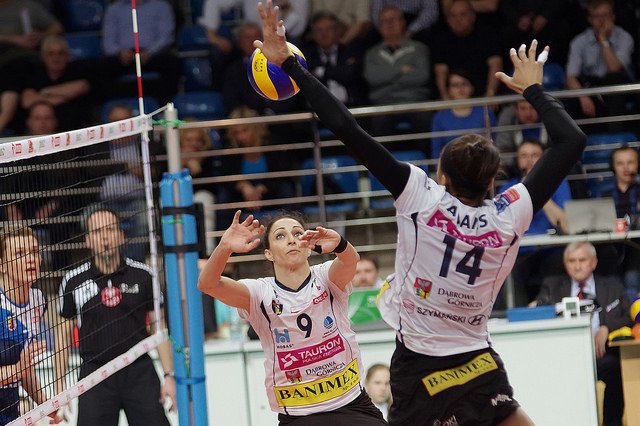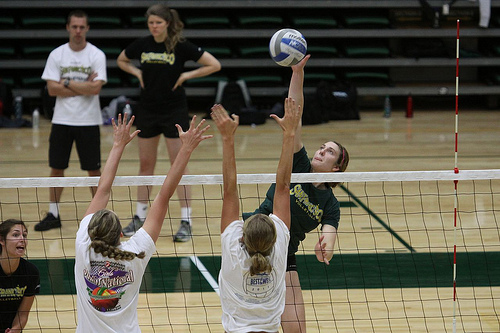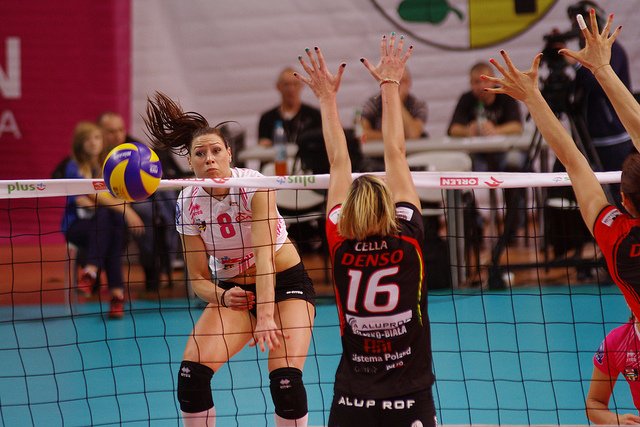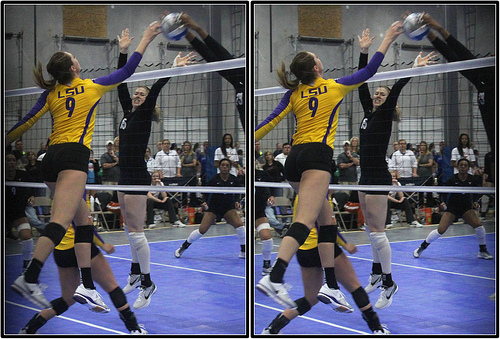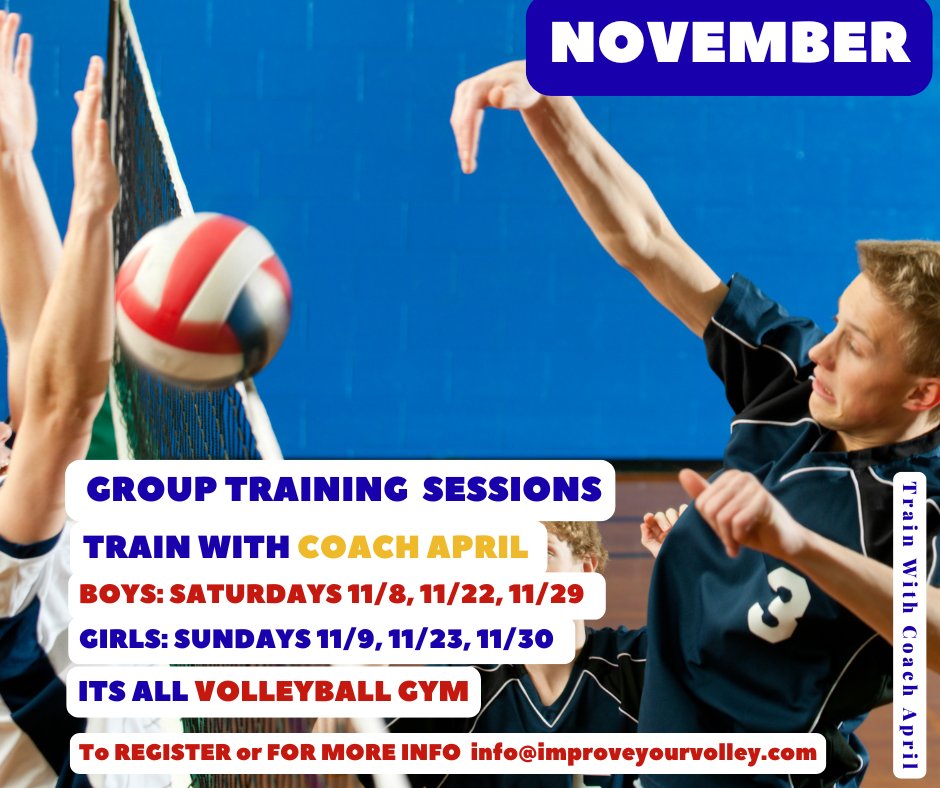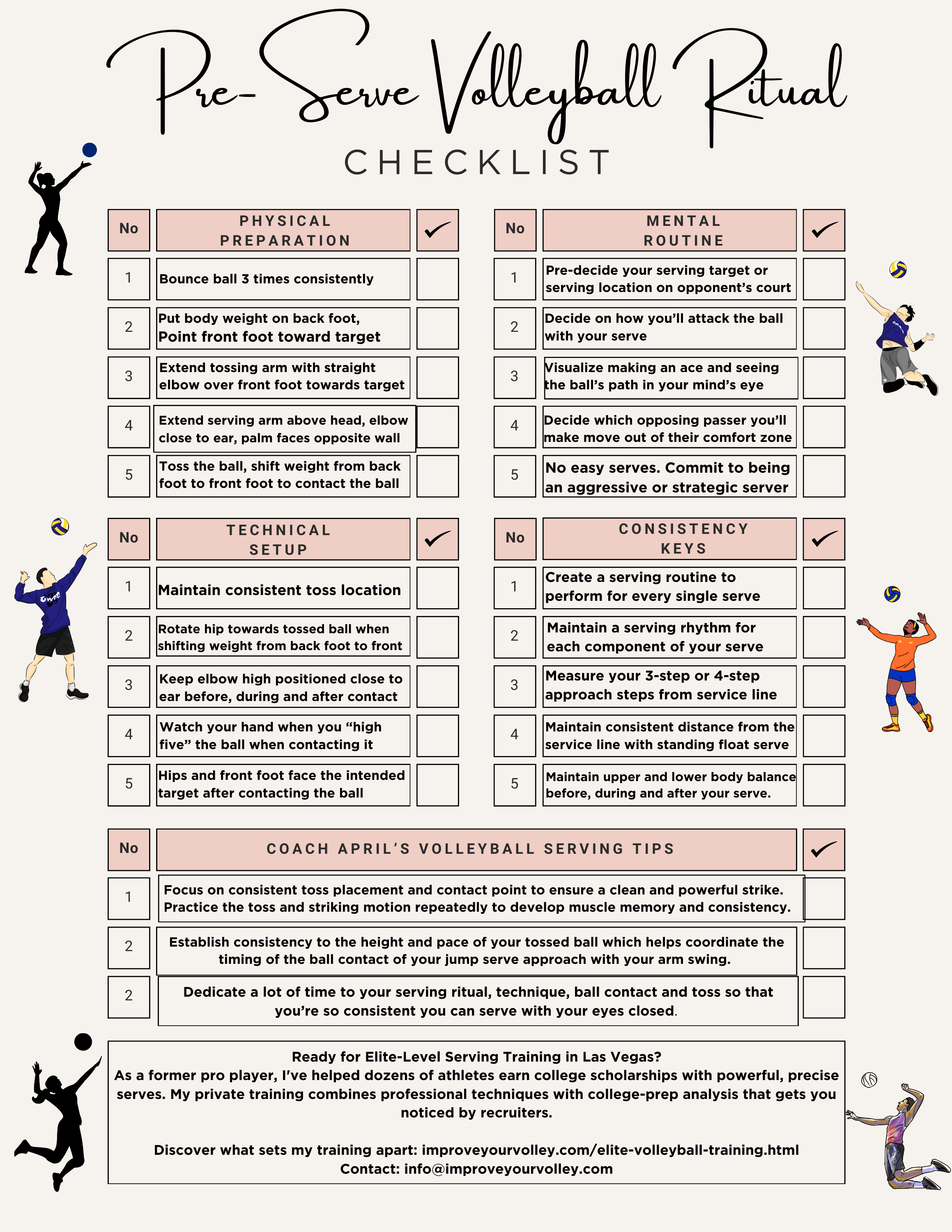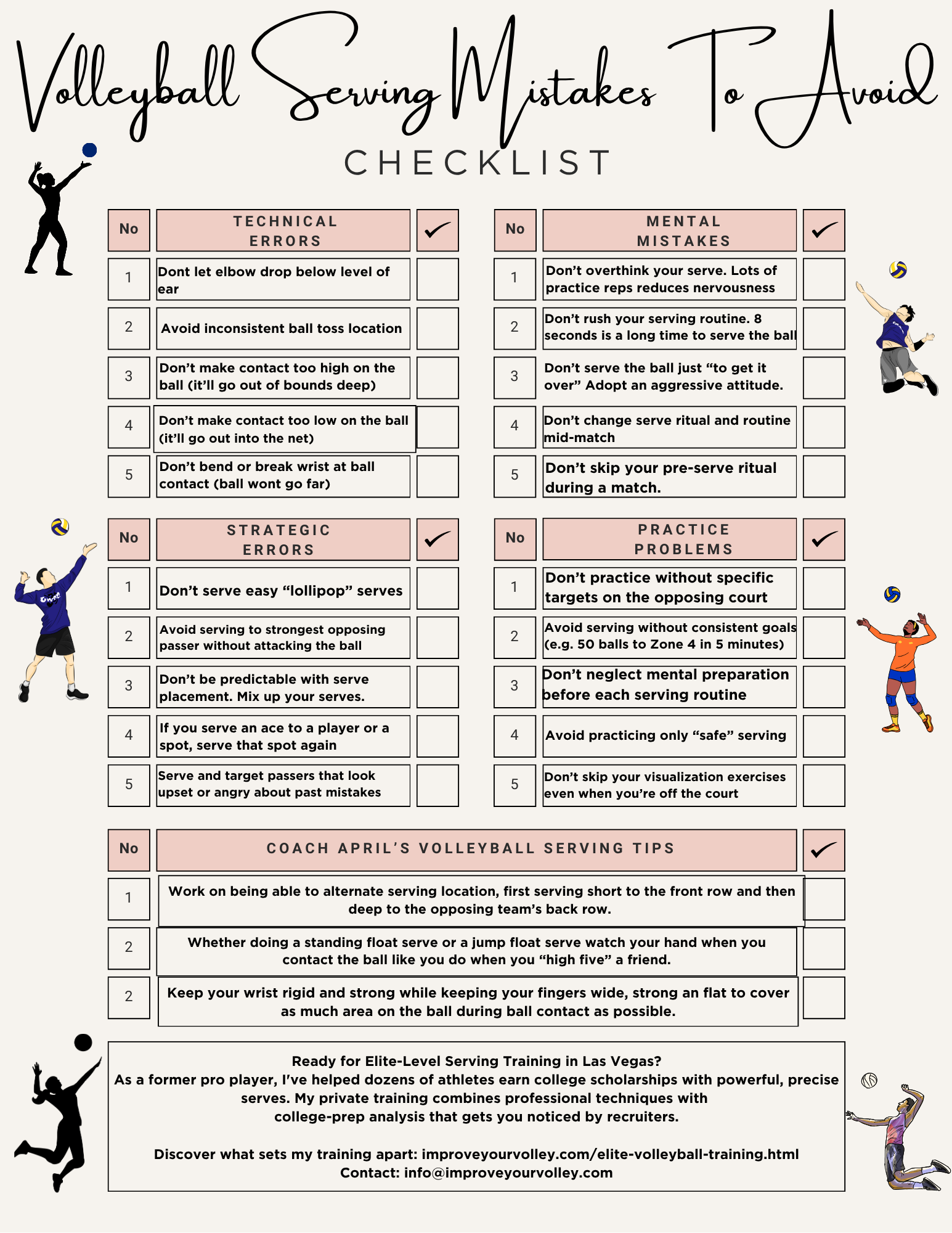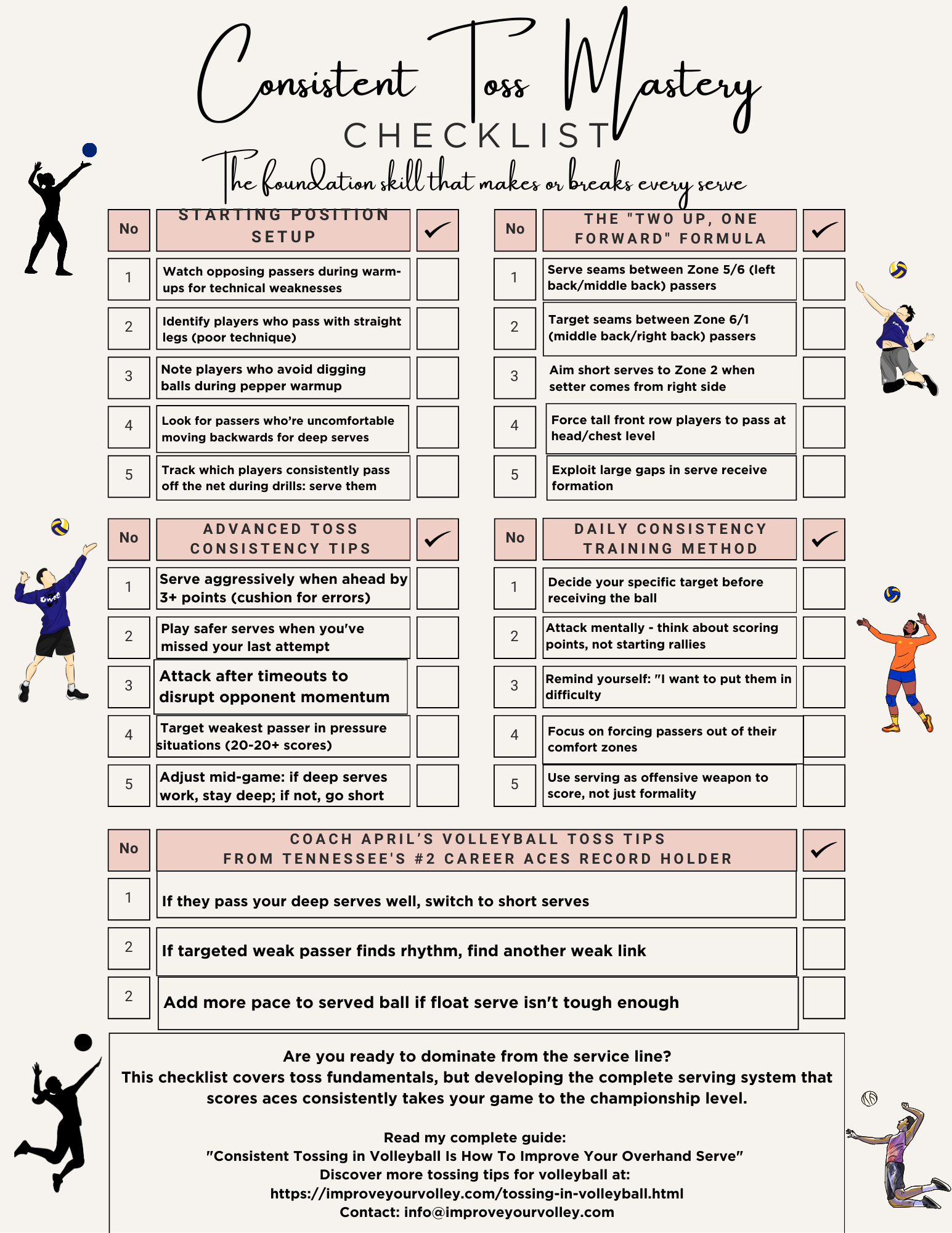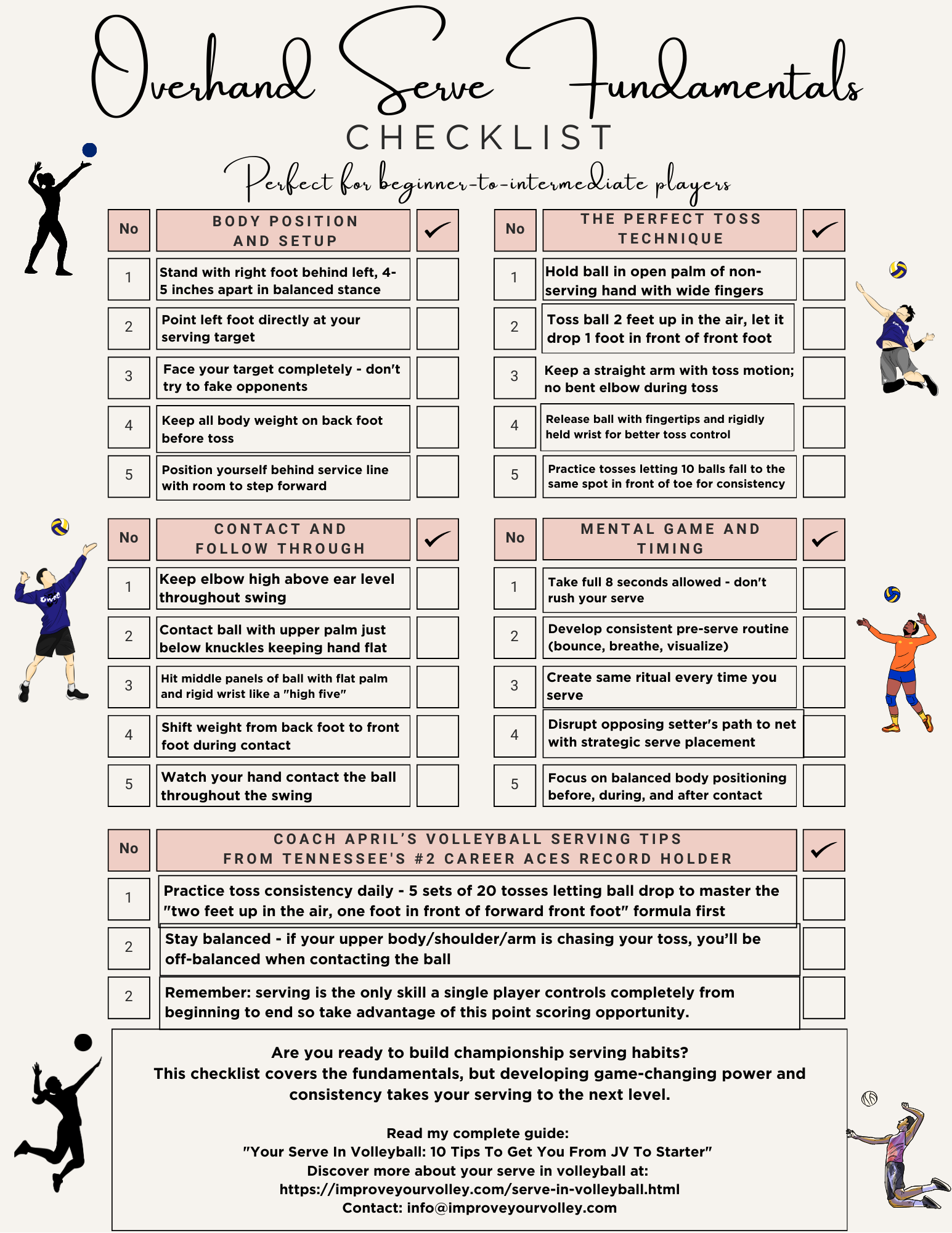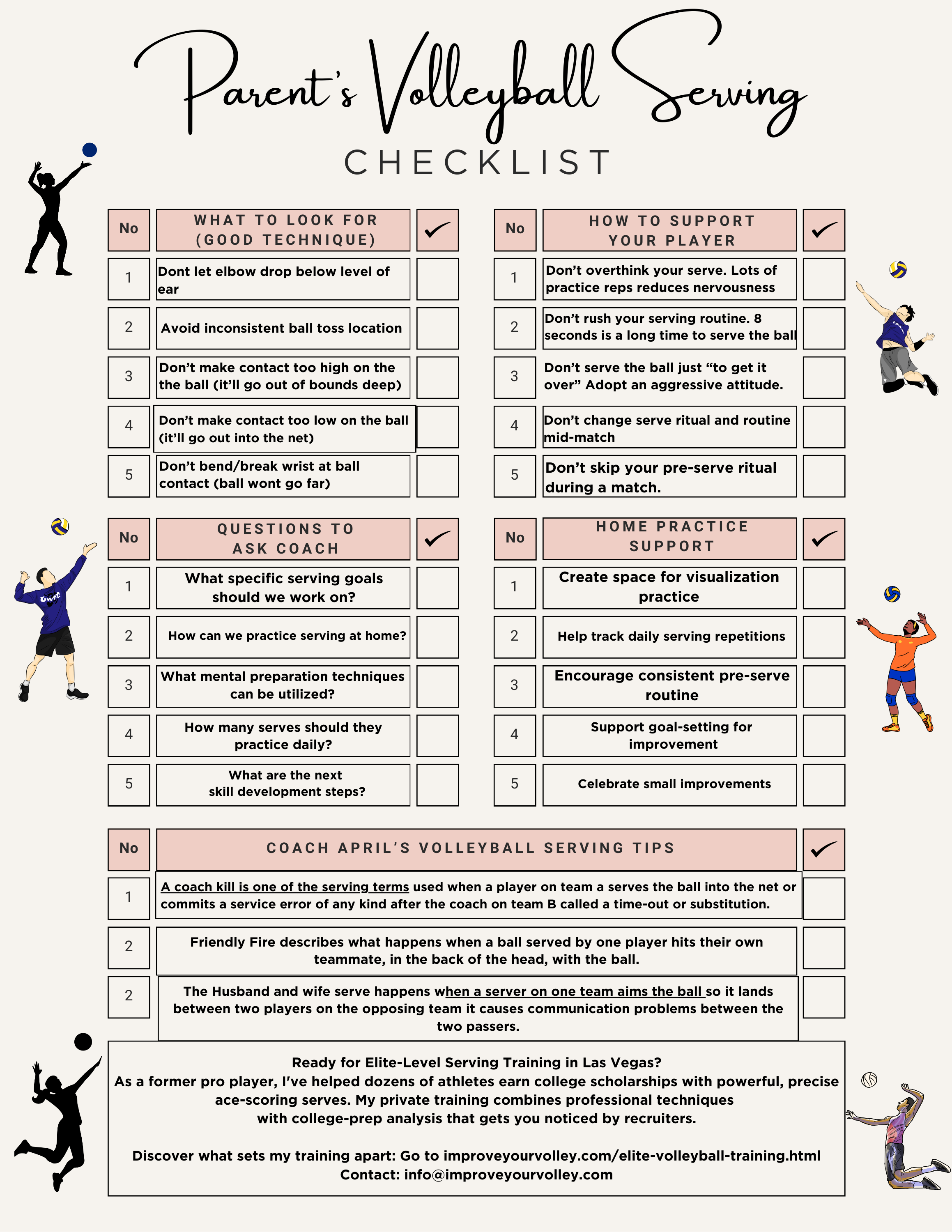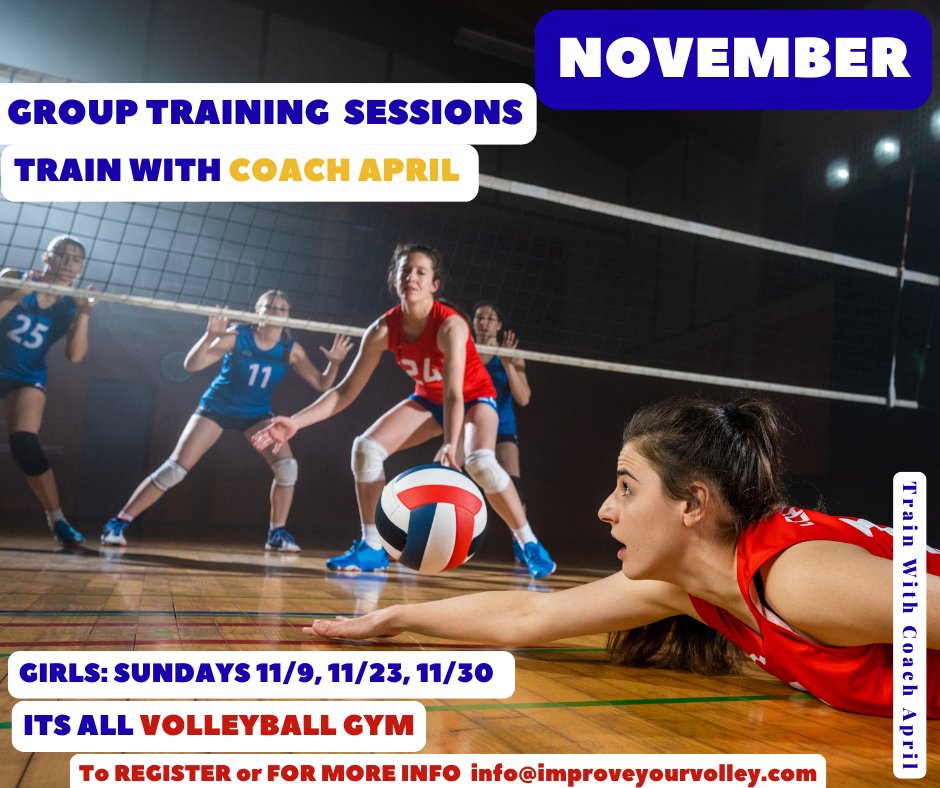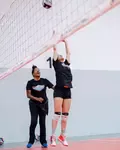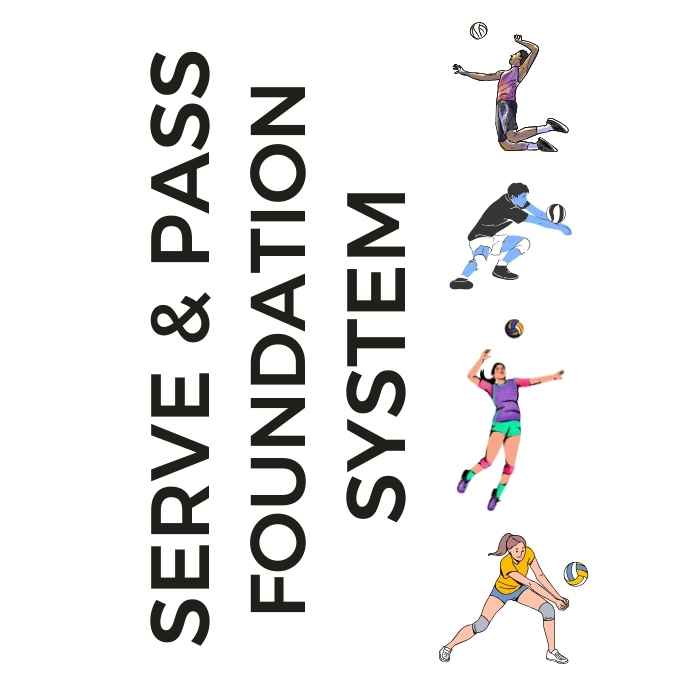
Serve + Pass Foundation System: The Complete Skills Arsenal The two-skill mastery system that transforms inconsistent players into the athletes coaches build their lineups around. Stop Struggling With The Two Most Important Skills In Volleyball!
- Improve Your Volleyball with Coach April
- Volleyball Game Rules: Serving, Score,
- Volleyball Attacking Rules
Volleyball Attacking Rules: What Is A Spike In Volleyball?
These volleyball attacking rules and regulations for the spike govern how an "attack hit" which is any playing action, that is not a serve or is not a block that drives the ball into the opposing court.
An attack, is any playing action that drives the ball into the opponent's court. That is, anything that is not a serve or is not a block.
So technically, that could include a kick, couldn't it?
Of course, if you choose to hit the ball hard, after taking your spike approach to the ball and jumping in the air to hit it, that's called a spike.
Volleyball Attacking Rules and Regulations For The High Speed Hard Attack Hit
Spiking the ball is a high speed attack option for a player who's sending the third contact over the net and into the opponent's court with the intent of scoring a point or sideout for their team.
You are spiking the ball, in an attempt to generate enough
- speed,
- power
- and force,
so that the ball is not blocked by any of the three defensive players at the net nor is it dug up by any of the players in the back row on defense.
You are purposefully trying to beat the block and the defense with your high reach, hard paced, well placed, high intensity, quick arm rotation attack hit.
You are purposefully trying to beat the block and the defense with your high reach, hard paced, well placed, high intensity, quick arm rotation attack hit.
Go ahead!
Count how many adjectives I stuffed into that sentence!
What's Volleyball Attacking?
Remember your attack hit happens after your setter or another player has delivered the ball to you, high enough or fast enough for you to, ideally, take a three step or four step spike approach to hit it over the net.
Types of Volleyball Attacking: The Tip Attack
Volleyball attacking rules and regulations state that you can use a soft speed attack known as "the tip" to drive the ball into the opposing team's court in an attempt to score a point, or during a rally.
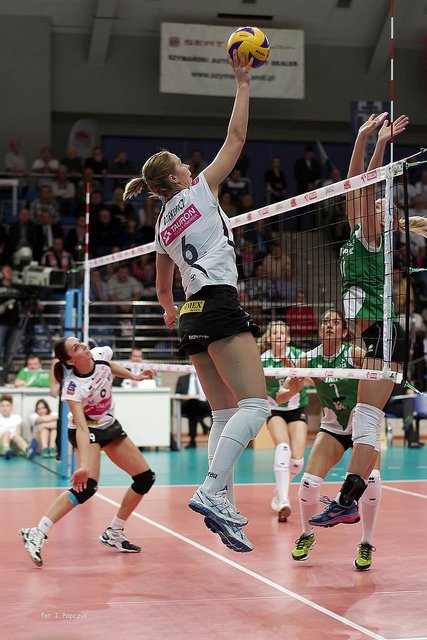 Volleyball Attacking the Tip: Midway through your swing, you slow down your arm while keeping your elbow high, to make contact with your fingertips on the ball. (Jaroslaw)
Volleyball Attacking the Tip: Midway through your swing, you slow down your arm while keeping your elbow high, to make contact with your fingertips on the ball. (Jaroslaw)The tip or tipping the ball, is done with the same spike approach footwork to the ball, and the same arm swing.
Midway through your swing, you slow down your arm while keeping your elbow high, to make contact with your fingertips on the ball.
 Your goal is to place or push the ball over the block and in an open space on the opponent's court in order to score a point or sideout. (Ralph Arvesen)
Your goal is to place or push the ball over the block and in an open space on the opponent's court in order to score a point or sideout. (Ralph Arvesen)Your goal is to place or push the ball over the block and in an open space on the opponent's court in order to score a point or sideout.
When tipping the ball, you must make a clean contact, without catching it or letting the ball come to a rest in the palm of your hand.
Official USA volleyball game rules and regulations state that if you
- "catch" the ball, or
- "lift" the ball, or
- if the referee thinks the ball has come to a complete stop while in your hand,
he/she will blow the whistle and award the ball to the opposing team.
 When tipping the ball, you must make a clean contact, without catching it or letting the ball come to a rest in the palm of your hand. (Ralph Arvesen)
When tipping the ball, you must make a clean contact, without catching it or letting the ball come to a rest in the palm of your hand. (Ralph Arvesen)Also according to indoor volleyball rules and regulations the playing action of an attack hit, whether high speed or slow, is completed once the ball has crossed the plane of the net or a player on the opposing team has contacted the ball.
More Volleyball Attacking Rules and Regulations For Spiking
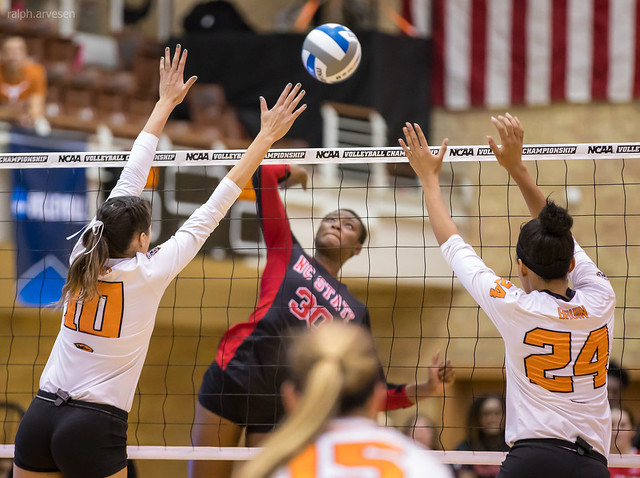 When you attack a ball, whether spiking tipping or off speed hitting, you have to attack the ball from your side of the court. (Ralph Arvesen)
When you attack a ball, whether spiking tipping or off speed hitting, you have to attack the ball from your side of the court. (Ralph Arvesen)When you attack a ball, whether spiking tipping or off speed hitting, you have to attack the ball from your side of the court.
So if you reach over and tip or hit a ball and your arm or elbow is over the net inside the opposing team's court, the referee would blow the whistle and award the ball to the other team.
How do you know what's "too far over" the net?
Imagine there's an imaginary wall, that starts at the top of the net and goes all the way up to the ceiling.
If you reached through the wall and contacted the ball while it was on the opposing team's side ...the referee would blow the whistle.
Fault!
Point and the ball are given to the other team.
When you contact the ball, whether spiking or however, you need to be on your side or...you can be right on top of the net, 50-50.
But the minute, you reach over, expect to hear the whistle.
 Thanks for visiting. Be sure to check out more of my volleyball passing articles by clicking one of the links below! (April Chapple)
Thanks for visiting. Be sure to check out more of my volleyball passing articles by clicking one of the links below! (April Chapple)Do You Follow Me on Instagram?
Follow me on Instagram @coach_apchap to improve your game even faster!
I share alot of individual, partner and easy-to-do volleyball serving drills we do in class with my followers.
Many of these volleyball practice drills you can do at home by yourself or try at your next practice with your teammates.
If you're a B team or JV player trying to make varsity next year...your goal should be to complete 1000 reps a day of at least three of the basic skills on your own...volleyball passing, serving and setting should be at the top of the list.
Rules of Volleyball: Where Do You Go From Here?
Good times! Where do you need to go now? Here are three options:
- Learn more about the Rules.
- Follow the suggested reading on our Sitemap page Learning How To Play (Sitemap)
- Or visit the pages in the Volleyball Rules section in the drop down menu at the top of the page.
If your athlete struggles with consistent serve receive, gets subbed out, or is overlooked for playing time—this is the fix you’ve been looking for.

Struggling with passing consistency?
I help talented passers tired of getting pulled from games because of inconsistent serve receive skills BUILD passing confidence without expensive private lessons using the same 3-step system that's helped dozens of my athletes get recruited.
Download my eBook for $17.99 and start building the passing confidence that keeps you on the court—and gets you seen by college coaches.
From Lady Vol to Legend: Coach April Produces Powerful Passionate Players...is that you?
What Are You Looking For?
Click to Download Your Pre Serving Ritual Mastery Checklist pdf:
🎯Volleyball Pre Serving Ritual Guide -
Players! Learn How To Transform Your Serve from Weak to Weapon
Click to Download Your Parent's Volleyball Serving Checklist pdf
🎯Parent's Volleyball Serving Checklist Guide
Parents! Help Your Player Develop Championship Serves (Even If You've Never Played)

Hi there!
Thanks for stopping by. Hope you learned something today that will help you reach your volleyball goals.
Be sure to subscribe to my email newsletter so you can learn more each week!
Stay strong! Stay motivated!
-Coach April

SUSCRIBE to my email newsletter below!
 Click to learn more about the weekly volleyball classes and clinics or email info@imrpoveyourvolley.com for information
Click to learn more about the weekly volleyball classes and clinics or email info@imrpoveyourvolley.com for informationCongratulations to my seven Boys-18s Vegas Volley club players who played in two state championship finals yesterday, the 3A and 5A State champinship finals at Sunrise Mountain High School.
TOURNAMENT CHAMPIONS!
A-1 Vegas Volley VBC
In It To Win It Tournament
May 2 - 4, 2025 Tournament
Gold Medalists
18s Premier Division
Vegas Volleyball's Unsung Heroes: Celebrating Moms with Peace Love Volleyball Shirts
Ready to energize your volleyball mom journey?
Subscribe to my 'Producing Powerful Passionate Peaceful Players' email list above on ImproveYourVolley.com.
You'll receive energy-boosting tips, exclusive insights from me, Coach April Chapple on maintaining momentum in volleyball.
Let's power up the Vegas volleyball scene together!
Recent Articles
-
Volleyball Setting Printables: 6 Checklists + At-Home Drills
Dec 24, 25 02:40 AM
Master volleyball setting with 6 comprehensive checklists. Includes hand positioning, footwork, set types, back setting, jump setting & at-home drills. $27 -
The Volleyball Checklist: Skill Development Systems That Get Results
Dec 24, 25 02:22 AM
Master serving, passing and other basic skills with a step-by-step volleyball checklist from a Tennessee Hall of Famer who trains college-recruited athletes. -
How To Set A Volleyball A Basic Setter Guide To Good Setting Technique
Dec 24, 25 02:07 AM
Want to be a good volleyball setter? I show you how to set a volleyball the way I teach my club players, focusing on hand and body placement and ball contact.
